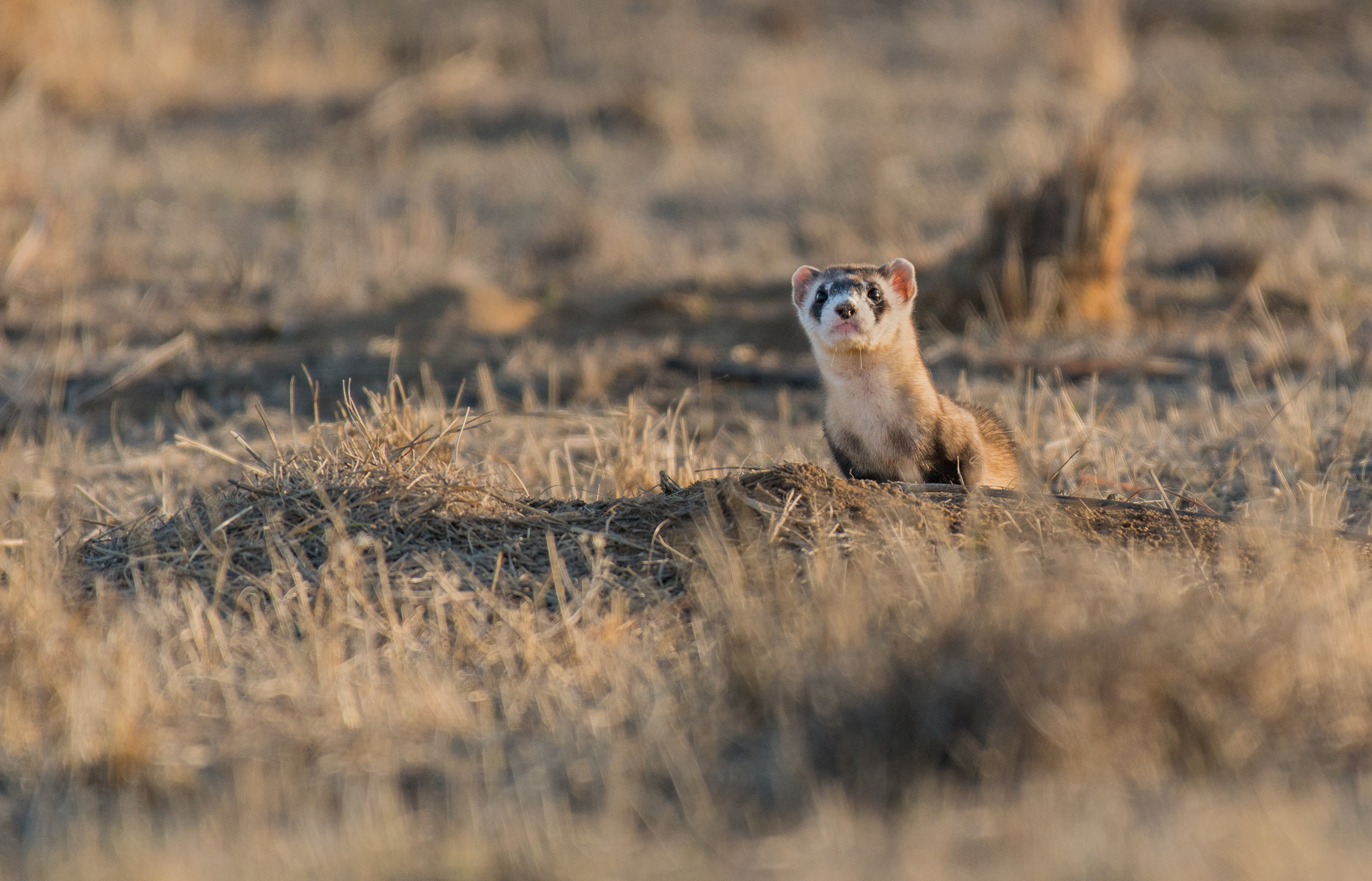Black-footed Ferret
"Black-footed Ferret" by Bruno Gore (digital)
“As for the Black-footed Ferret, who doesn’t like a goofy little weasel...^^”
Your purchase is helping Expedition Art and Saving Species purchase land in Sumatra! Learn more about the project.
Habitat
The Black footed ferret is native to North America, in the prairies of the Midwestern United states, and is not found anywhere else in the world. Their habitat spans across the continental United States, extending from the southern border of Canada to the northern border of Mexico in the Great Plains Region.
Family life
The Black-footed ferret are solitary animals and prefer to live alone. During the summer months, the females give birth to litters that range from one to six kits. Ferret newborns are blind and completely helpless. Because of this, they remain with their mothers in their burrow for nearly a month and a half before they dare to venture above ground. They stay close to their mother until they are sufficiently able to be on their own, usually around the fall. The vast majority of the life of the black-footed ferret is spent underground. At night, they will leave the burrow to hunt their preferred food: prairie dogs. Black-footed ferrets also have an excellent sense of hearing, sight and smell, as well as olfactory communication.
Lifespan
The average lifespan for a ferret is three to four years in the wild and eight to nine years in captivity.
Hunting Habits/Diet
The ferret’s slender, long body is perfectly adapted to access the living quarters of the prairie dog, its primary prey (compromising more than 90% of the black-footed ferret’s diet). A ferret may eat more than 100 prairie dogs in one year. Black-footed ferrets also eat mice, squirrels, rabbits, birds and other rodents.
Population
Recovery efforts have helped repopulate the black-footed ferret population to almost 370 ferrets in the wild and in captivity.
Fun Fact
Black-footed ferrets are nocturnal hunting prey at night. They usually sleep around 21 hours a day. A group of ferrets is known as a ‘business’.
Why are they Endangered?
The black-footed ferret is endangered because of the decrease in population of the prairie dog. Prairie dogs are becoming more scarce due to destruction of their habitat--less than 5% of the original area that they occupied remains. This is particularly problematic because 10,000 acres of prairie dog colonies are required for a single black-footed ferret colony to survive. Humans also threaten the remaining population of prairie dogs, as they are considered pests. This has an indirect, but equally negative impact on the survival of the black-footed ferret.
Status
Endangered


